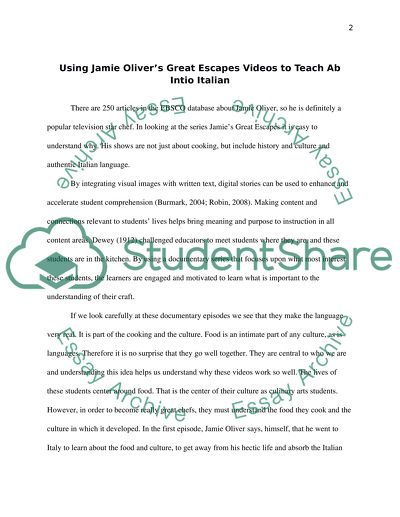Cite this document
(“The Documentary 'Jamie Oliver's Great Escape' as a useful tool in Research Paper”, n.d.)
The Documentary 'Jamie Oliver's Great Escape' as a useful tool in Research Paper. Retrieved from https://studentshare.org/education/1435383-the-documentary-jamie-oliver-s-great-escape-as-a
The Documentary 'Jamie Oliver's Great Escape' as a useful tool in Research Paper. Retrieved from https://studentshare.org/education/1435383-the-documentary-jamie-oliver-s-great-escape-as-a
(The Documentary 'Jamie Oliver's Great Escape' As a Useful Tool in Research Paper)
The Documentary 'Jamie Oliver's Great Escape' As a Useful Tool in Research Paper. https://studentshare.org/education/1435383-the-documentary-jamie-oliver-s-great-escape-as-a.
The Documentary 'Jamie Oliver's Great Escape' As a Useful Tool in Research Paper. https://studentshare.org/education/1435383-the-documentary-jamie-oliver-s-great-escape-as-a.
“The Documentary 'Jamie Oliver's Great Escape' As a Useful Tool in Research Paper”, n.d. https://studentshare.org/education/1435383-the-documentary-jamie-oliver-s-great-escape-as-a.


